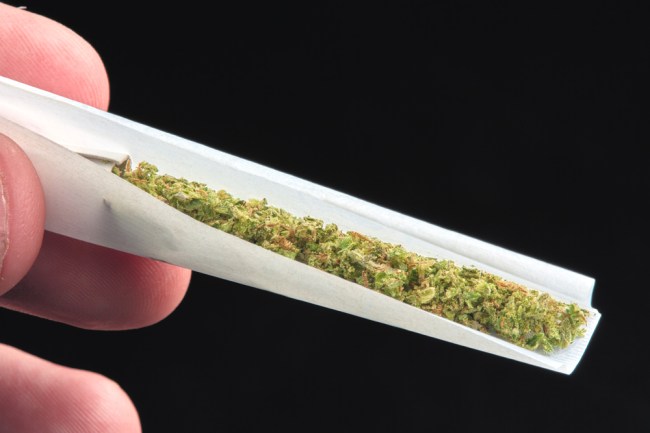
Shutterstock / MWesselPhoto
The Golden State welcomed the green rush on Monday as California officially legalized recreational marijuana. Reefer madness was in full effect as Californians showed up hours before legal marijuana stores opened and waited in long lines to get some of that legit kush. Starting in 2018, California adults 21-years-old and older can possess as much as an ounce and grow up to six plants at home as of Monday. The weed prohibition is over and stoners celebrated by flooding legal pot shops on Monday.
Recreational Pot Sales Launch in California pic.twitter.com/n0dDJAAi22
— Fox News (@FoxNews) January 2, 2018
Regulators at the Bureau of Cannabis Control worked through the holiday to try to process 1,400 pending license applications for retail sales, distribution, testing facilities and other businesses before the legalization. The State of California issued roughly 200 state licenses by the end of last week including A Therapeutic Alternative, which has sold medical pot since 2009. At 9 am on Monday, A Therapeutic Alternative opened with a celebratory ribbon-cutting ceremony. “I’m scared, I’m excited, I’m relieved,” Kimberly Cargile, director of the pot shop in Sacramento told Fox Business.
At the Mankind Cooperative in San Diego, lines were long and there was a 40-minute wait to get the newly legal cannabis. Buyers from as far away as Iowa, Kansas, and Canada trekked to California to get their hands on the legal weed. 420 Central in Santa Ana opened at 7 am on Monday and there were dozens of people already lined up before the shop opened. Making this the most initiative shown by stoners ever. By 9 am, there was a line of more than 100 people waiting to get their weed.
At Buddy’s in San Jose, which received the first license issued by California to sell recreational marijuana, there were anxious crowds. “It is probably our busiest day in our seven-year history,” said Matt Lucero, the owner of Buddy’s, which is also a legal dispenser of medical marijuana. “We have folks outside; every chair in the building is filled right now.” Lucerno said he expected a 30% bump in sales overnight, but added, “it looks, in looking around this room, more like 50 to 60%.”
Legal marijuana off to blazing start in California pic.twitter.com/VBqJSyL75d
— AFP News Agency (@AFP) January 2, 2018
Urbn Leaf, which operates weed spots in Bay Park and Golden Hill, rented a 40-foot bus to bring customers from a bar in Pacific Beach to their stores. The company also had 31 drivers making deliveries in San Diego. “We can deliver marijuana in 20 minutes; it’s like pizza,” Will Senn, co-founder of Urbn Leaf, told the L.A. Times. “We’re at capacity inside, we have 75 people in line, and the line is getting longer. We would get as many as 1,000 people by the end of the day.”
Los Angeles and San Francisco didn’t act fast enough to authorize pot shops to get state licenses by New Year’s Day. Some legal weed retailers are expected to open in West Hollywood on Tuesday. Santa Ana was the closest for Los Angeles residents to get recreational weed on New Year’s Day. San Diego and Palm Springs also had licensed retailers. But not all of California welcomed weed. California towns such as Riverside and Fresno which outlawed sales of marijuana. Signs on Californian highways warned there will be consequences for driving while intoxicated with the slogan “Drive high, Get a DUI.”
Budtenders helped eager customers pick out pre-rolled joints, topical creams, and marijuana edibles including dark chocolate covered espresso beans for $18. Marijuana strains with names such as “Island Sweet Skunk,” “The Sheriff,” “Grape Kryptonite,” “Girl Scout Cookies,” and “Mega Queso.” Customers browsed an iPad which featured a marijuana menu with all of the various buds for sale.
California, which is nation’s most populous state, became the sixth state to allow sales of recreational marijuana joining Colorado, Washington, Oregon, Alaska, and Nevada. California’s legal marijuana market is expected to grow to $7 billion annually by 2020, compared to the $6.6 billion of the entire legal cannabis market in the United States in 2016. California cannabis entrepreneurs are expected to rake in $5.2 billion in revenue in 2018. State and local governments are projected to bring in $1 billion annually in tax revenue within several years because taxes can add as much as 45% to the cost depending on the area.